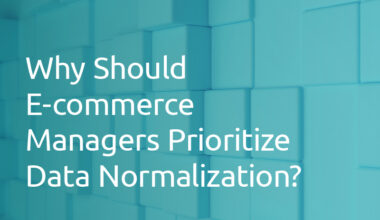The key to staying competitive in ecommerce lies in data. More specifically, it hinges on data classification – a fundamental process of categorizing data into types, forms, and other distinct categories. Well-executed data classification offers numerous benefits, from enhancing customer experience to streamlining business operations. This article delves into the transformative power of data classification in the ecommerce sector.
Defining Data Classification
Data classification involves categorizing data into various types, forms, or any other distinct class. For ecommerce businesses, data can range from product information and customer details to transaction records. Organizing this data into structured categories aids in efficient retrieval, understanding, and analysis, thus driving informed decision-making.
The Impacts of Effective Data Classification
1. Improved Customer Experience: Proper classification enables easier searchability and navigation on the ecommerce platform. This facilitates a more seamless and satisfying shopping experience, leading to higher customer retention and loyalty.
2. Streamlined Operations: Efficient data classification simplifies many operational tasks like inventory management, accounting, and customer relationship management, thereby increasing business productivity.
3. Data Security: With a proper classification system, businesses can identify sensitive data and apply appropriate security measures to protect it, reducing the risk of breaches.
4. Data-Driven Marketing: Data classification helps businesses understand customer preferences and buying patterns. This information can be used to personalize marketing campaigns, increasing their effectiveness and ROI.
The Role of Technology in Data Classification
In today’s digital age, various technologies can help ecommerce businesses with data classification:
1. Artificial Intelligence (AI): AI systems can rapidly and accurately classify large volumes of data, reducing manual effort and errors.
2. Machine Learning (ML): ML algorithms can learn from existing classifications to improve and automate the classification process over time.
3. Data Mining: Data mining techniques can be used to classify data and reveal valuable patterns or trends that can inform business strategy
Challenges and Solutions in Data Classification
Despite its many benefits, data classification is not without challenges. These may include the sheer volume of data, inaccuracies in classification, and evolving data privacy regulations. Solutions include adopting advanced technologies like AI and ML, training staff on data handling procedures, and staying updated on regulatory changes.
As ecommerce continues to grow, the power of data classification cannot be underestimated. It holds the potential to boost customer experience, enhance operational efficiency, increase security, and drive data-driven marketing strategies. By harnessing technology and overcoming challenges, businesses can unlock the full potential of data classification and propel their ecommerce success to new heights.
Learn more about the power of product data classification here.
 1.416.619.5349 Ext.325
1.416.619.5349 Ext.325 







